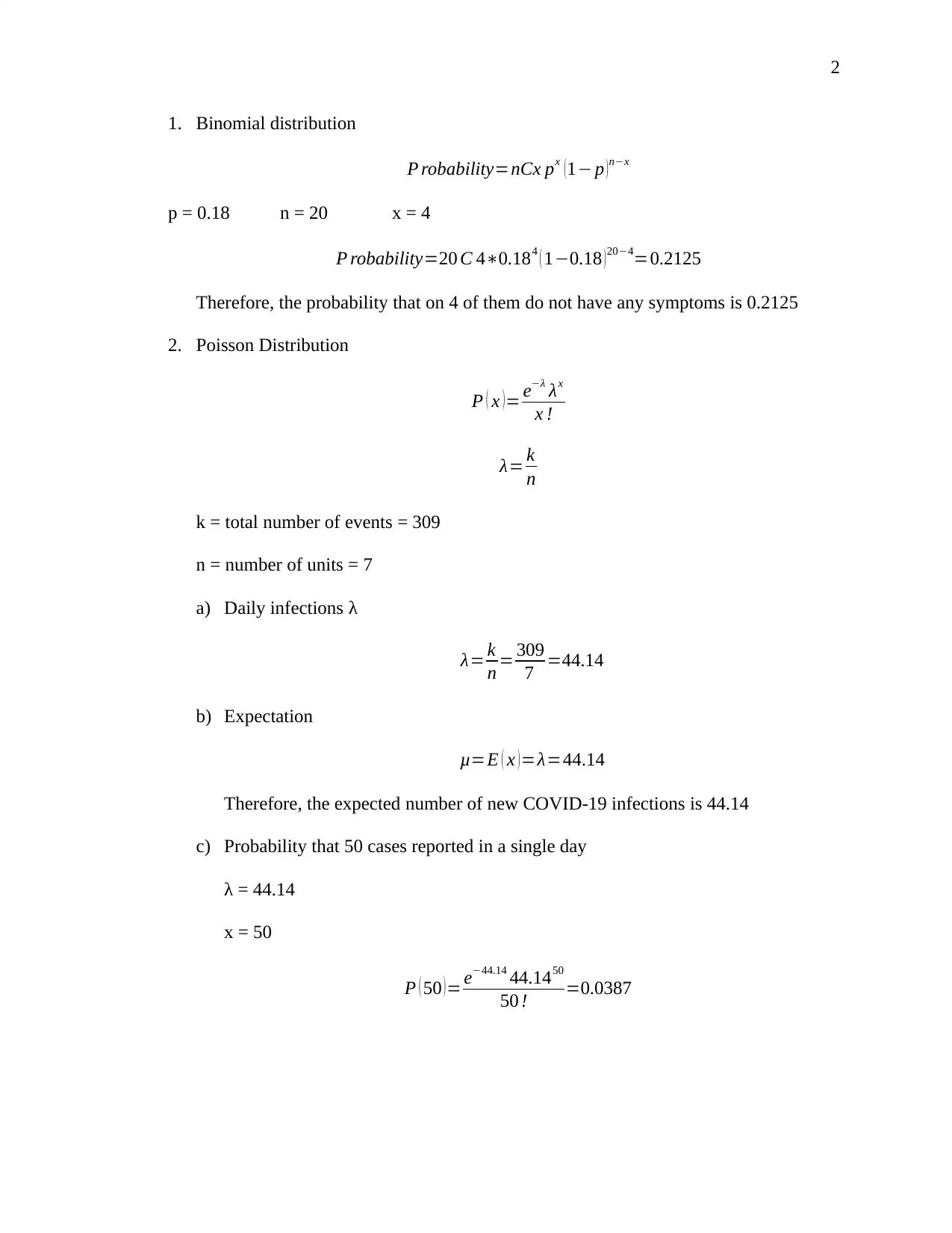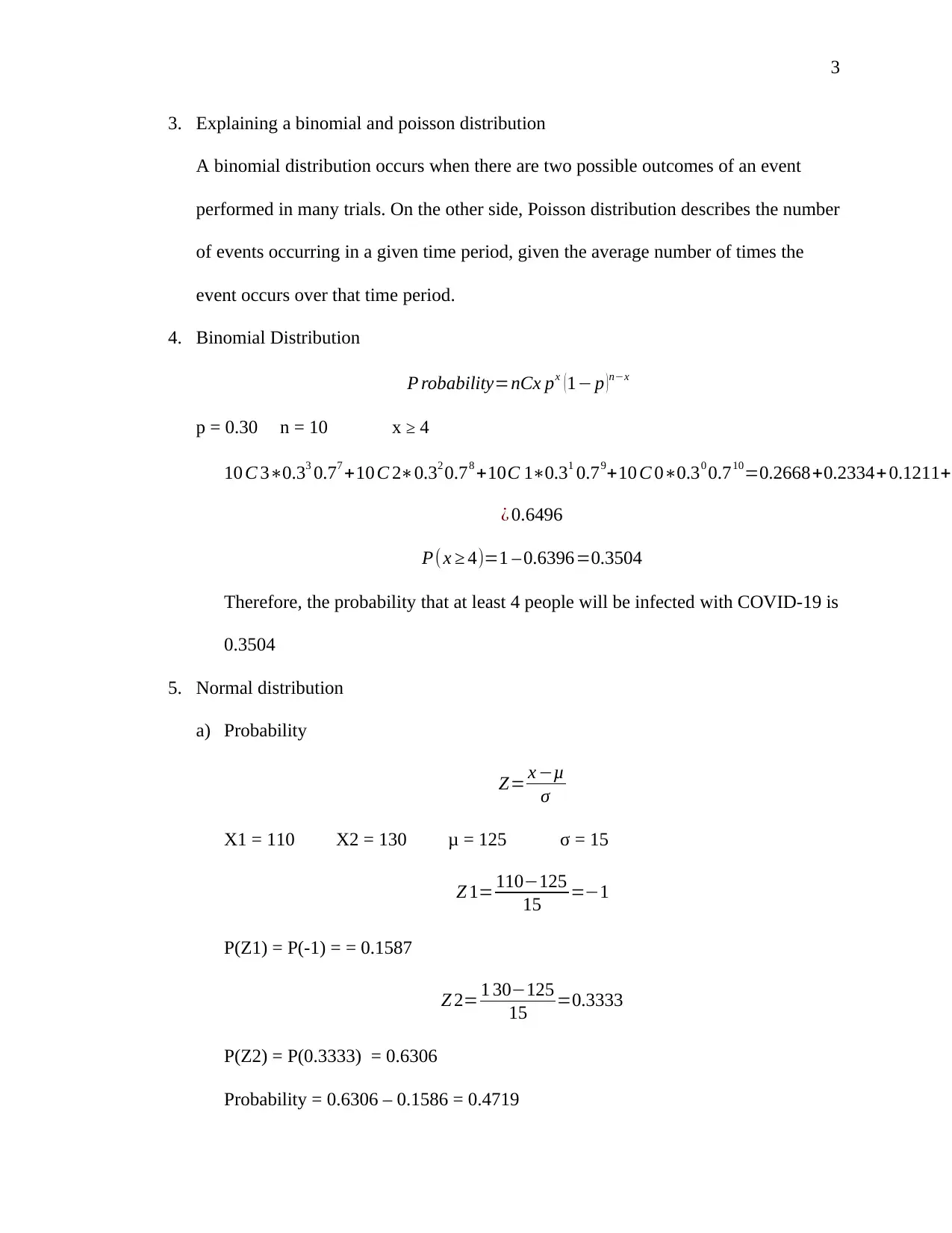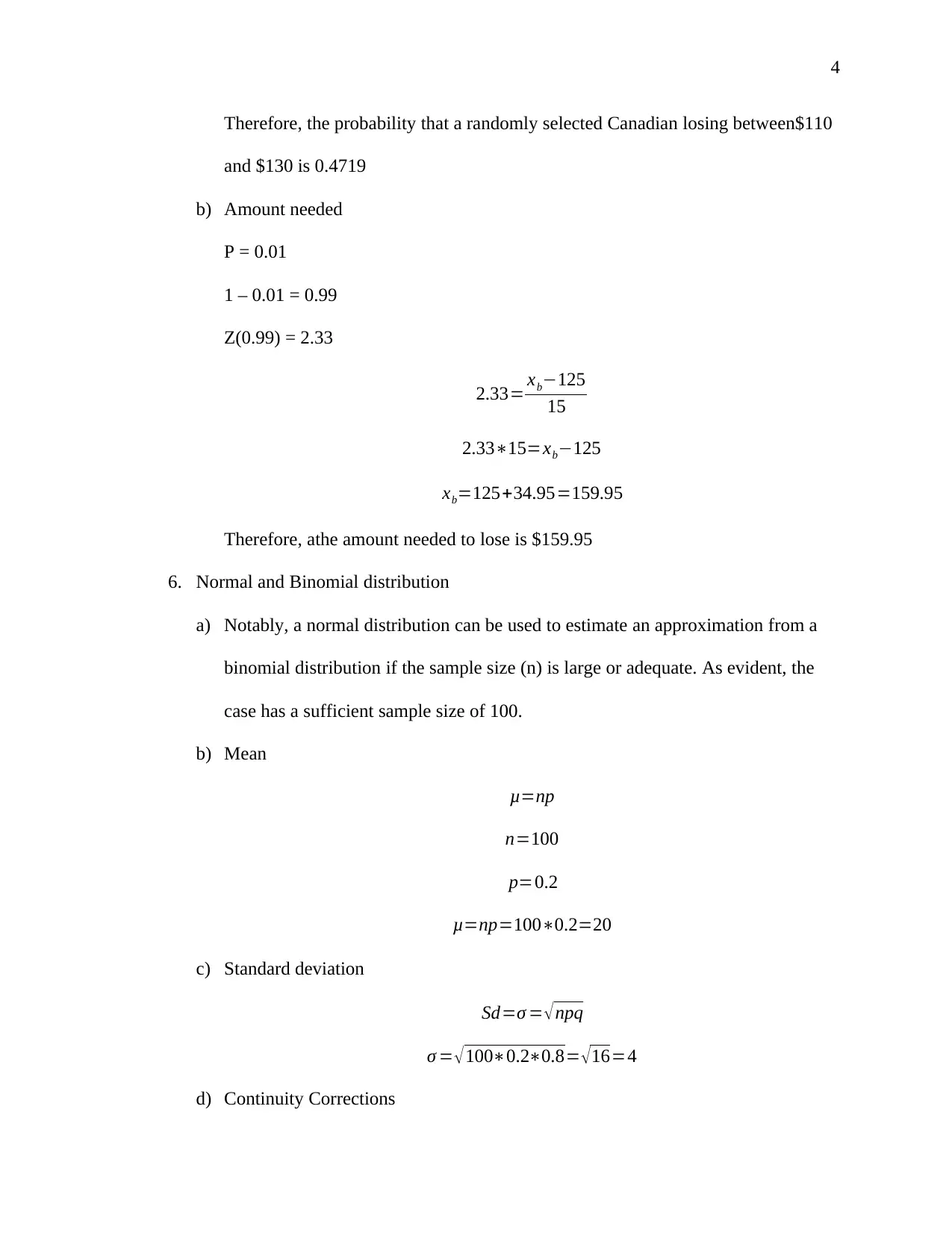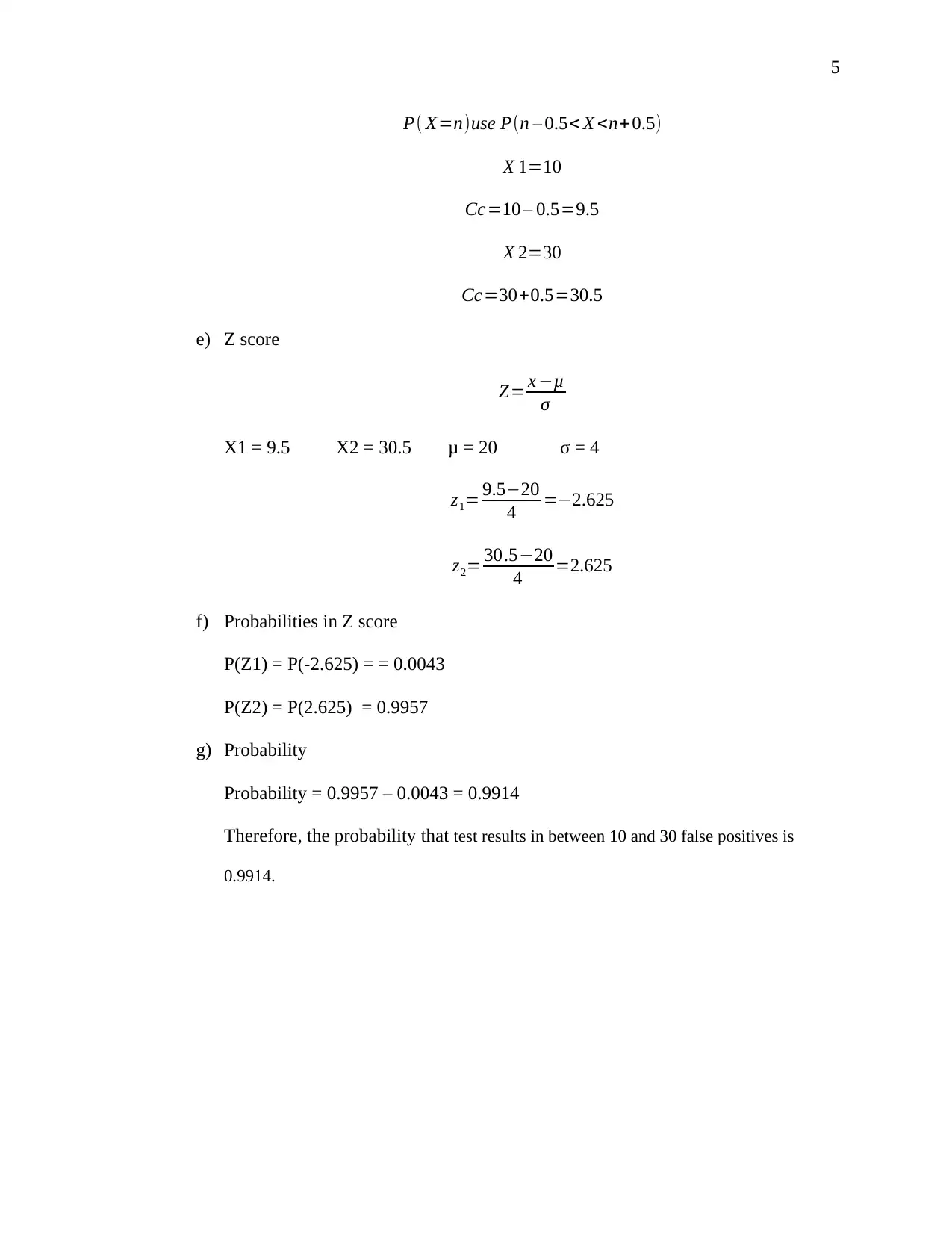Statistics Assignment: Binomial, Poisson, and Normal Distributions
VerifiedAdded on 2022/09/08
|5
|369
|21
Homework Assignment
AI Summary
This assignment solution addresses problems related to binomial, Poisson, and normal distributions within a statistical context. It begins with a binomial distribution problem calculating the probability of asymptomatic COVID-19 cases in a sample. The solution then moves on to a Poisson distribution, calculating the daily rate and expected number of new COVID-19 infections and the probability of a specific number of cases. The assignment also explores normal distribution problems, including calculating probabilities within a range and determining a value based on a percentile. Finally, the solution demonstrates the approximation of a binomial distribution using a normal distribution, along with relevant calculations and interpretations. This document is a valuable resource for students seeking to understand and solve statistical problems involving these key distributions.
1 out of 5










![[object Object]](/_next/static/media/star-bottom.7253800d.svg)